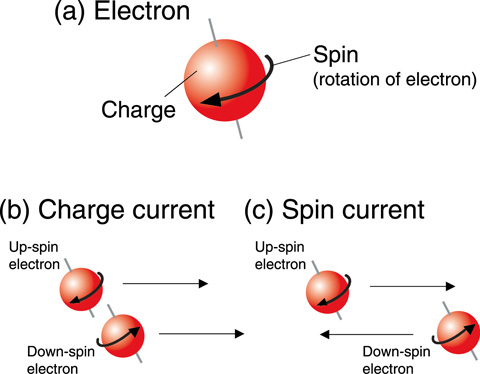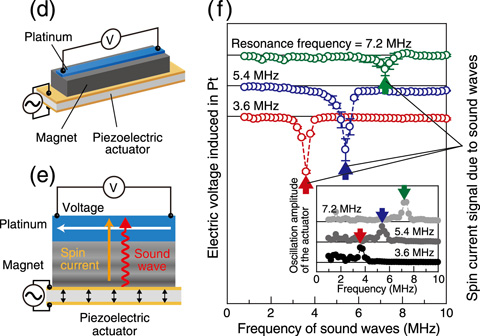
Fig.7-4 Electrons, charge currents, and spin currents

Fig.7-5 Spin current generation using sound waves
Electronics form the basis of the modern information society. “Spintronics,” a new electronic technology, has drawn global attention as a new way to achieve further reduction in both size and power consumption of electronic devices. We have found a new phenomenon linking such modern “spintronics” and ubiquitous sounds.
Electrons in a material possess two aspects: “charge” as a source of electricity and “spin” as a source of magnetism (Fig.7-4). While conventional electronics have been developed by making use of the charge currents in devices, “spintronics” aim to develop an innovative functionality of devices by making use of the “spin currents”, or the flow of spins. The spin current is indispensable for spintronics, but it is difficult to drive the spin current in a device. Therefore, only a limited number of ways for generating spin currents have been identified to date.
In this context, we have discovered a new method for generating spin currents by merely injecting sound waves into a material. Our method uses a “spin current device,” which is composed of a magnet with a platinum terminal on the top, attached to a piezoelectric actuator that acts as a sound wave generator (Fig.7-5). After injecting sound waves into the “spin current device”, we measured the spin current signal induced in the platinum terminal and found that when a sound wave with a certain frequency is injected, a spin current is generated in the “spin current device”.
The following phenomenon is known as the “spin pumping effect”: When the “spin current device” is excited by radio frequency (rf) waves, a spin current is generated in the device. In the present study, we have clarified both theoretically and experimentally that a similar “spin pumping effect” can be observed even if a sound wave is used to excite the “spin current device” instead of rf waves.
Sound waves can propagate through materials that can neither conduct electricity nor possess magnetism, and thus are used as device substrates. Therefore, the method developed in the present study enables the extraction of electromagnetic energy from a substrate material and creates a new route for the development of innovative spintronic devices.